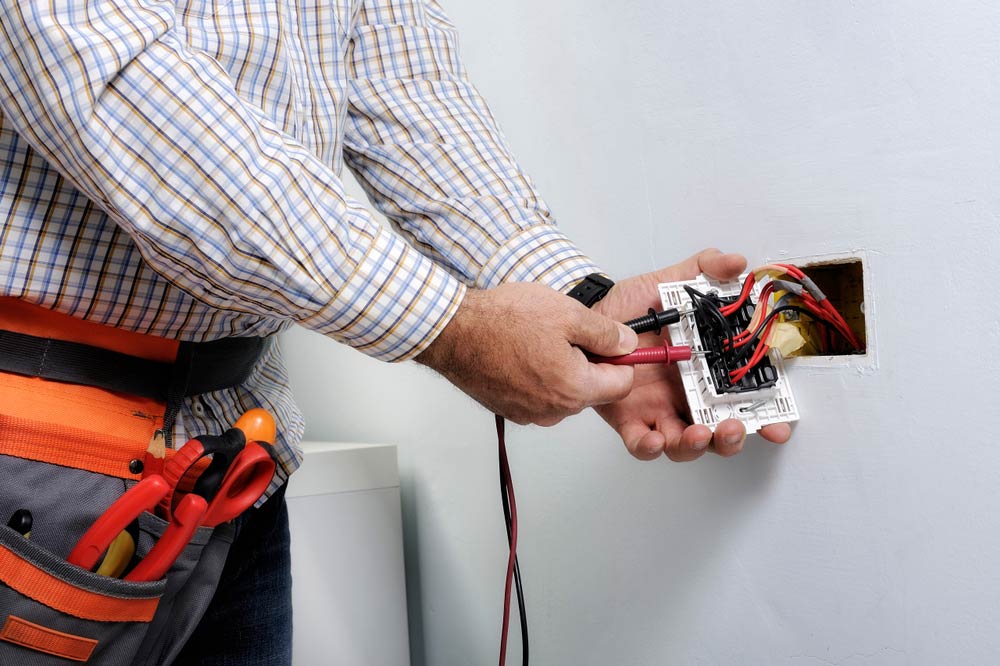Debunking Electric Setup: Comprehending Codes and Regulations for a Legal and Safe Setup
In the realm of electric installation, adherence to codes and laws is critical to ensure both validity and security. The trip to demystifying electrical setup goes past plain experience with laws; it requires a profound understanding of just how to execute secure electrical methods properly.
Significance of Electric Codes
The adherence to electric codes is important in making certain the safety and integrity of electric installations. Electrical codes function as a collection of standards and guidelines that dictate the appropriate layout, setup, and upkeep of electric systems. These codes are developed to minimize the risk of electrical dangers, fires, and various other safety and security issues that may develop from damaged electrical work.

Furthermore, electric codes are consistently updated to incorporate brand-new technologies, ideal practices, and safety procedures. Staying upgraded with these codes is vital for professionals in the electrical sector to make sure that their job satisfies the current security standards. Eventually, the importance of electrical codes exists in creating a safe and efficient electrical framework that benefits both individuals and areas.
Key Laws for Safety And Security
Several essential guidelines control the security requirements in electric installations. One crucial law is the National Electrical Code (NEC), which offers guidelines for risk-free electric design, installment, and assessment to shield people and building from electrical risks. The NEC covers elements such as circuitry methods, grounding, overcurrent protection, and devices setup to make certain a secure electric system.
Another vital law is the Occupational Safety And Security and Health Administration (OSHA) standards, which focus on the safety of workers associated with electrical setups (BRE Electrical). OSHA policies consist of demands for appropriate training, security procedures, and personal protective equipment to avoid workplace accidents and injuries
Moreover, the International Electrotechnical Payment (IEC) criteria intend to balance electrical installment guidelines on a worldwide scale. These criteria address problems like electrical tools security, electromagnetic compatibility, and power performance to advertise uniformity and safety and security in electric installations worldwide.
Conformity with these essential regulations is necessary to make certain the security and validity of electrical installations, securing both people and property from the dangers connected with electrical energy.
Recognizing National Electric Code
Trick laws such as the National Electrical Code (NEC) provide essential guidelines for risk-free electric design, setup, and inspection to make sure the security of people and home from electric risks. The NEC, additionally referred to as NFPA 70, is an extensive collection of standards for electrical installments that are updated every three years. It is established by the National Fire Defense Association (NFPA) and is commonly taken on across the United States.
The NEC covers different aspects of electrical job, including electrical wiring techniques, grounding, overcurrent protection, and tools installation. It aims to secure individuals and home by dealing with possible threats related to electrical systems. Conformity with the NEC is normally imposed by regional authorities having jurisdiction (AHJs), such as developing code authorities and examiners.
Recognizing the NEC is important for electric contractors, developers, and assessors page to ensure that installations meet the required safety demands. By sticking to the NEC guidelines, specialists can aid prevent electrical crashes and ensure the reliability of electrical systems in residential, commercial, and industrial setups.

Conformity With Local Building Codes
Recognizing and adhering to regional structure codes is important for making sure the safety and security and compliance of electrical setups within a certain territory. These codes outline particular needs for electric installations, such as the type of electrical wiring to be utilized, positioning of electrical outlets, basing approaches, and load capacities.
When it pertains to electric installments, failing to adhere to local building codes can result in major consequences. Non-compliant installments might position security dangers, boost the danger of electric fires, and cause expensive penalties Clicking Here or legal problems. Furthermore, insurance provider may decline to cover damages resulting from installations that do not fulfill neighborhood structure code needs. Consequently, it is important for electricians and professionals to stay educated around and strictly stick to the neighborhood building regulations appropriate to their projects.
Making Certain Safe Electrical Practices
Practicing stringent adherence to established safety and security protocols is critical in the field of electric setups to mitigate prospective risks and make certain the wellness of people and residential properties. Safety in electric work includes numerous elements, beginning with the proper training of workers associated with installation, upkeep, and repair. It is vital to follow maker instructions carefully when taking care of electrical elements and tools. Prior to beginning any kind of work, it is vital to perform see an extensive threat assessment to identify prospective threats and implement safety nets. Making use of personal protective devices (PPE) such as shielded handwear covers, safety glasses, and non-conductive footwear is non-negotiable to protect versus electrical shocks and arc flashes. Normal equipment evaluations, testing, and upkeep routines are crucial to detect and correct faults prior to they intensify into security dangers. Furthermore, adherence to correct lockout-tagout treatments during maintenance activities is essential to stop unexpected energization of circuits. By prioritizing risk-free methods, electrical installations can function efficiently while minimizing the likelihood of crashes or damages.
Verdict
Finally, adherence to electrical codes and laws is important for ensuring the safety and security and legality of electric setups. Recognizing the National Electric Code and compliance with neighborhood building regulations are essential for a risk-free setup. By complying with these guidelines and practicing secure electrical methods, individuals can stop prospective hazards and ensure the appropriate performance of their electrical systems.